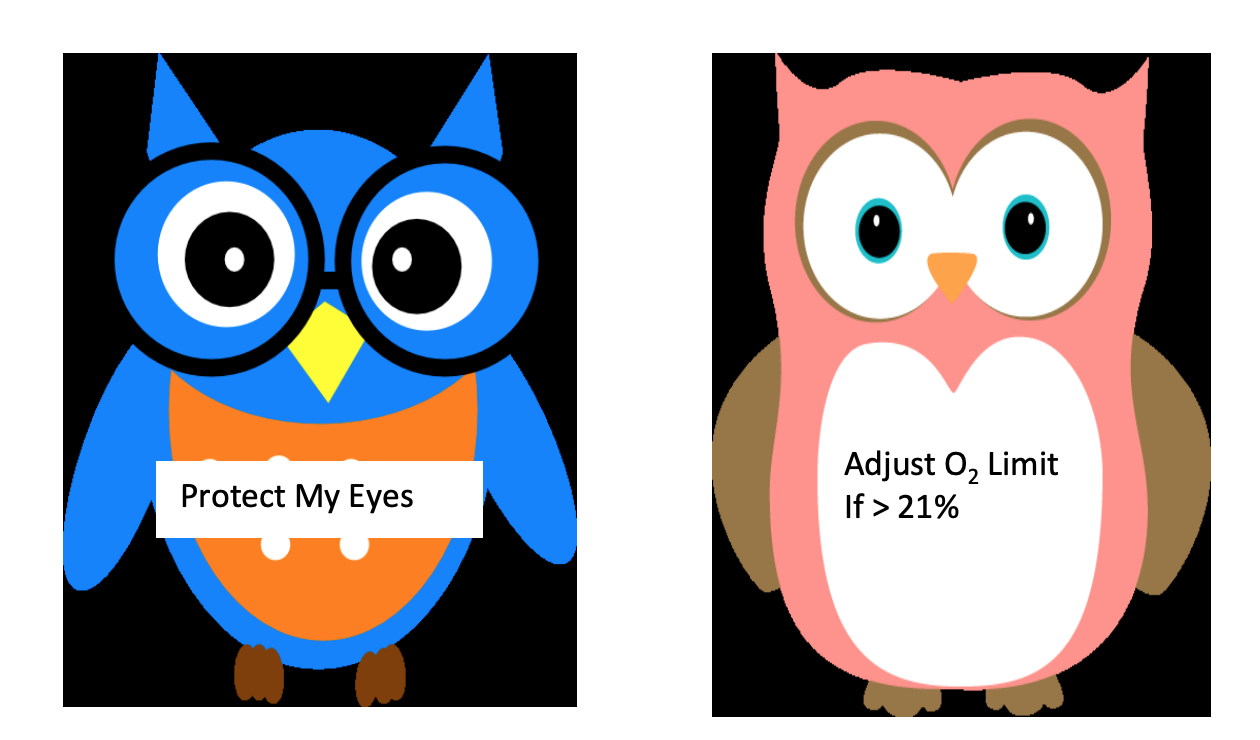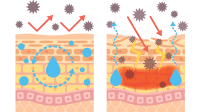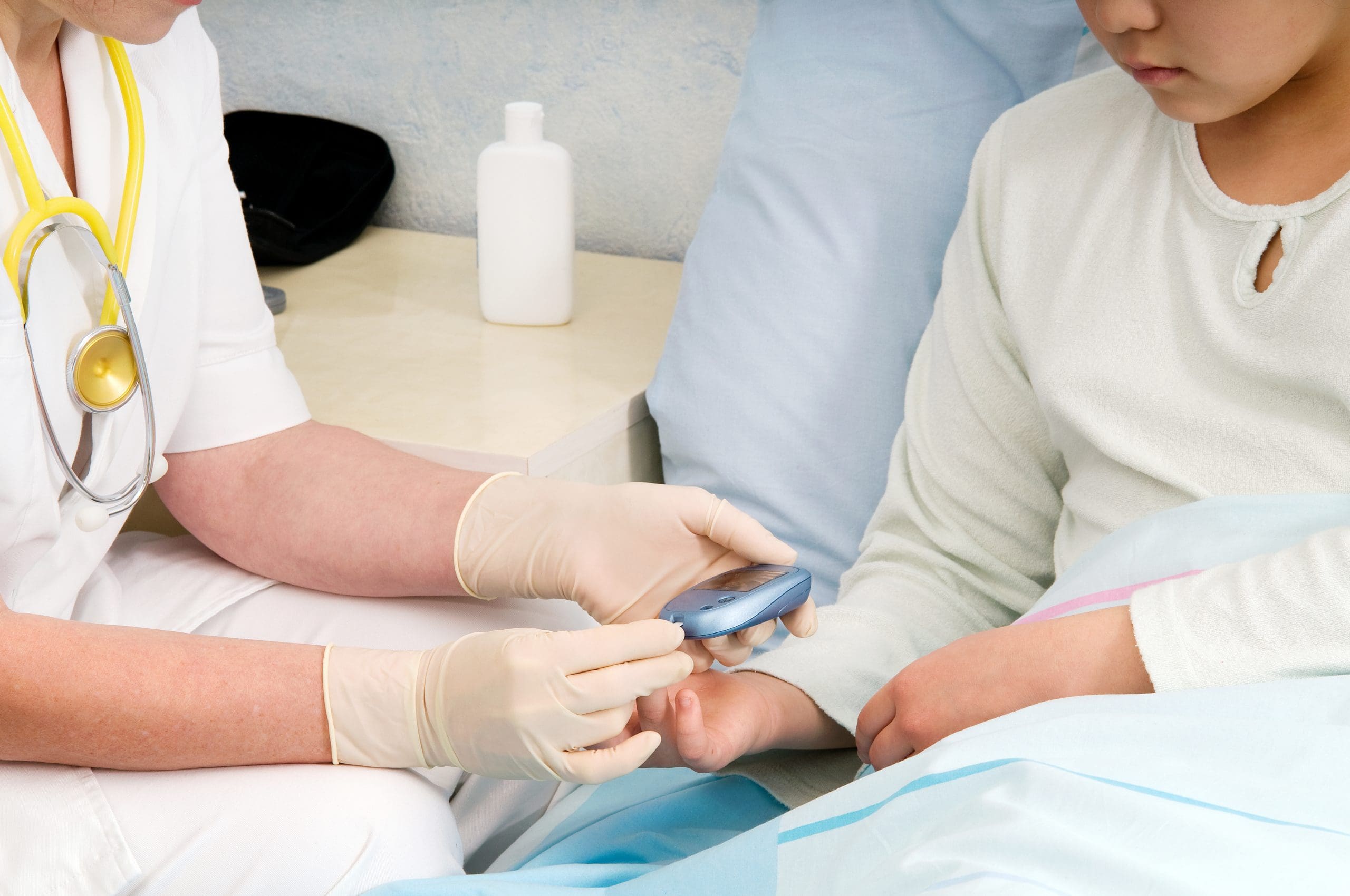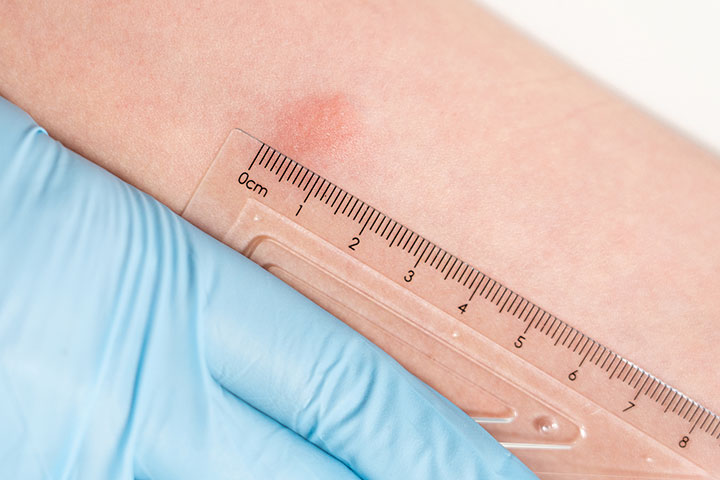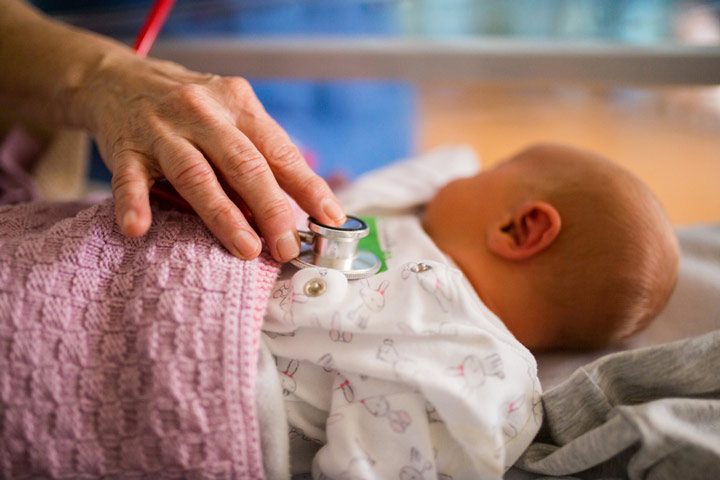In this podcast exclusive, Dr. Patricia Macho discusses the importance of maintaining oxygen saturation within prescribed limits in order to prevent Retinopathy of Prematurity in low birth weight infants.
She also discusses the novel interventions she developed for neonatal nurses that help to increase compliance with maintaining oxygen saturation limits.
Dr. Macho, Neonatal ICU Clinical Professional Development Educator at Cohen Children’s Medical Center of New York, authored the poster entitled “Retinopathy of Prematurity and Oxygen Within Limits (OWL) Nursing Interventions in Very Low Birth-Weight Infants” presented at Children Hospital Association’s 2017 Quality and Safety in Children’s Health Conference.
Below is a transcript of Dr. Macho’s interview, conducted by Lisette Hilton.
Lisette
With me today is Patty Macho, an advanced practice nurse who is the Neonatal/ICU clinical professional development educator at the Cohen Children’s Medical Center of New York. Patty has presented on several occasions at nursing and other conferences on the topic of retinopathy of prematurity. I’ll ask her today about what nurses need to know about retinopathy of prematurity. Patty, thanks for joining us.
Patricia Macho
You’re quite welcome, Lisette. Thank you for having me here today.
Lisette
What is the clinical cause and effect of retinopathy of prematurity?
Patricia Macho
Retinopathy of prematurity, or ROP, is an overgrowth of retinal vessels that can affect vision and it can even lead to blindness, depending on the severity of the disease. Clinical causes are being exposed to supplemental oxygen and having oxygen levels that are either too high or too low. Being born premature or being exposed to supplemental oxygen are two of the main risk factors for developing ROP.
Lisette
Is it pretty common?
Patricia Macho
For premature infants, it is fairly common. The prevalence, there’s a wide variation in the prevalence. It can be anywhere from about 15% to 30% of infants that are born premature—and in some NICUs, the level is even higher. So, yes, it is pretty prevalent in NICUs.
Lisette
I understand that Stevie Wonder suffered from that. Did you ever hear that?
Patricia Macho
No, but I wouldn’t be surprised that it can unfortunately lead to blindness. I don’t know whether he was premature or not and, unfortunately, way back when, when he would have been born, we didn’t know that much about the effects of oxygen. So, he probably was given way too much.
Lisette
So, that leads to the second question. How is our understanding of it evolved over the years?
Patricia Macho
It has evolved a lot over the last, say, 30 to 40 years. Originally, when ROP was first discovered, they thought it was caused by just being exposed to 100% oxygen. And also, at that same time, they believed that, for babies that were born premature, they needed their oxygen levels to be about 95% to 100% to help prevent negative outcomes such as chronic lung disease or neurological complications. But, through research over the years, they determined that it was more the level of oxygen in the infant’s blood as opposed to receiving 100% oxygen and how long they received supplemental oxygen that led to ROP. Also, further research found that limiting how much supplemental that we give to infants can lead to a decreased incidence of ROP. We now find that keeping their oxygen levels more around 90% to 95% will prevent ROP as opposed to having it be higher around 100%.
Lisette
How do providers diagnose and treat it?
Patricia Macho
ROP is diagnosed through eye exams. In our NICU here at Cohen’s (each NICU can set up its own criteria for which babies will need eye exams or not), but here at Cohen’s, we have any infant that is born less than 30 weeks’ gestation or weighing less than 1500 grams, they will have routine eye exams done. Because, this way, if we find the ROP early, we can adjust their oxygen and hopefully prevent any further damage to their eyes. Originally and here in our unit we are able to do our eye exams every two weeks unless there are some signs of increasing ROP and then we’ll do the exams every week or even more frequently than that, hoping that we can treat before it becomes severe. In our units, if the baby develops severe ROP, the treatment for it would be laser surgery to hopefully prevent the progression of the disease and any loss of eyesight.
Lisette
What’s the nurses’ role in detecting retinopathy of prematurity in caring for these infants in the NICU?
Patricia Macho
The nurses’ role in detecting and caring for these infants in the NICU is really prevention. Since the nurses spend most of the time at the baby’s bedside compared to other providers, they really need to be aware of the infant’s oxygen saturation levels. They need to be able to respond quickly to any saturation alarms that occur and be able to adjust the infant’s oxygen accordingly to maintain their sats within a prescribed limit. In our NICU, our nurses follow what we call the Oxygen Within Limits or OWL protocol. This way, we will maximize the amount of time that the infant spends with their oxygen levels between 88 and 95. In our unit, we determined that a range of 88 to 95 was optimal for decreasing the rate of ROP while also preventing increased mortality or morbidity from having too low an oxygen saturation level. The OWL protocol is a guideline that our NICU follows that’s based on our patient population. And it gives us a guideline on how to adjust the amount of oxygen that the infant receives based on their oxygen saturation level. If their oxygen saturation level decreases below 88, or increases above 95, the nurse will adjust the oxygen by either 2, 4, or 10 points based on the baseline oxygen level that the patient is in. So, for example, if we have a baby that is receiving 30% oxygen and their sat drops to 82, the nurse would increase the oxygen just by 2 to 32%. But, if that same infant was, say, receiving 75% oxygen, they would increase the oxygen by 10% to 85%, to help prevent any increase damage to the lungs or anything like that. After any oxygen change is made, nurses will remain at the infant’s bedside for at least 3 minutes to ensure that their baby’s oxygen saturation returns to the normal levels of 88 to 95. If it doesn’t, the nurse will then make further adjustments. Before we implemented the OWL protocol, in our unit, if an infant desatted to below 80 or, say, like to 75, we would increase the oxygen very quickly to like 50% or 100%—no matter how much oxygen they were receiving at the time. Then the baby saturation level would increase to 100% and we would then lower the oxygen back down to where it was and their sat would drop down low again and we would have to increase the oxygen back up. So, we found that it was becoming a vicious cycle where we were increasing and decreasing the oxygen a lot. And some studies have shown that having large swings in the oxygen saturation level of the babies can also contribute to developing ROP. So, by following the OWL protocol, we are able to avoid a lot of those big swings and how much oxygen that the babies receive and, for the majority of the time, our infants’ saturation levels have been staying within 88% to 95%.
Nurses also need to be able to assess and troubleshoot whenever the babies have a sudden desaturation while they’re caring for them because, many times, it’s not a matter that they need more oxygen, it’s that there is something else going on. They even either need to be suctioned or they need to readjust their EP tube or their CPAP prongs. So, this way, our nurses have been trained and they know to first look for other causes of why the baby has a sudden desaturation before they just increase the oxygen level and expose the babies to more oxygen.
Lisette
You presented a poster on the OWL intervention. Is there anything else on that poster, you told us quite a bit about the OWL intervention, anything else on that poster particularly that you want to mention?
Patricia Macho
Just that one of the main reasons that we had decided that we needed to make a change in our saturation levels and implement the OWL protocol was that we did find that we had a significantly higher rate of severe ROP that needed laser surgery compared to other NICUs that were part of the Vermont Ox collaborative [Vermont Oxford Network]. So, that’s when we decided to take a look at how we were regulating our oxygen. We had asked other NICUs that had lower rates what interventions they had implemented and we have found that, by changing our limits (we originally had our limits set for 85 to 97) and then, by changing them to 88 to 95, lowering it a little bit, we found that that helps with our, to improve our and decrease our rate of ROP. It was a big initiative that we undertook. There was a lot of education that needed to be done with the nursing staff and with the doctors so that the nurses and other staff would be aware of which babies needed to have their oxygen just regulated by the OWL protocol.
We developed some laminated signs that we put at all the babies’ bedsides that have the actual protocol listed on it so that they didn’t have to memorize it, they could just reference it if the baby was having a desaturation. We also laminated small pictures of owls that we put onto our babies’ monitors so that everyone would be aware that the baby was on the OWL protocol. And we started doing daily audits of whether our monitor limits were set correctly or not. And, by doing all this, we did find that it helps, has helped to decrease our rates significantly. We decreased it by about 50% and we’ve been able to keep our rate of ROP lower. We’ve also found that changing the oxygen limits helps to change the culture in our unit regarding the use and administration of supplemental oxygen. We used to really just go up and down pretty freely with it. Now, we’re much more conservative about doing it. And our babies have definitely had a decrease, we’re definitely seen a decreased rate of ROP and the need for laser surgery in our patients.
Lisette
All right, last question. Is there anything I haven’t asked you that’s important for today’s nurses to know about retinopathy of prematurity?
Patricia Macho
Really, I think the main thing that the nurses need to be aware of is that, even though the rate of ROP is definitely lower in most NICUs compared to what it had been say, 40 or 50 years ago, and you don’t see as many infants that are born premature that develop blindness from ROP, it is still a significant problem. It can cause some loss of vision. A lot of premature infants will need to wear eyeglasses or, later in life, will have vision problems. So, we really need to be really diligent and how we treat our babies with ROP and that we just don’t freely use oxygen; we give them what they need so that they’ll develop well, but that we don’t give them too much oxygen. Because, like any drug, the right amount is a good amount, but if you give too much, it can cause a lot of other problems.
Lisette
Thank you, Patty, this is great information. Thank you for taking time today.
Patricia Macho
You’re quite welcome. It was my pleasure.
This content was developed by American Nurse Journal and was provided through an educational grant by Medtronic.

